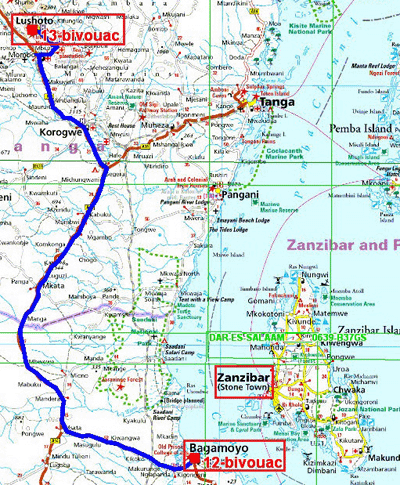
The GPS road tracklog
from Bagamoyo, Traveler's Lodge to Lushoto, Irente Farm
from 2019/03/18 to 2019/03/20
Lushoto, Irente Farm
Monday, March 18 I left Bagamoyo for Lushoto, at 1459 meters of
altitude, famous for the excursions in the hills covered with pines,
eucalyptus and banana trees. Irente View Point overhanging the B1 road
from Dar es Salaam to Moshi is in the heat haze, in bottom 33°C, in top
26°C. I established my bivouac at Irente Farm. On the way after the
crossroads between B1 and Lushoto road three guys signaled to me
to stop, of course I went my way. Alas they threw of stones to my
vehicle. Several kilometers further on I met a police officer with whom
I told the facts. But at the parking of Irente Farm I noted that the
first pan of double rear bay had been broken by the stones of the three
guys. I promised to pay some to the police officer on the road back to
B1. This incident recall the facts at the stopping in the State of
Chiapas in Mexico whose damage was more important,
here.
In end of the afternoon heat having fallen I decided to balance the
pressure of the tires by axle. I noted that the pressure did not go up
at the pressure gauge. By inspecting the pipe of brought air from the
compressor to the base plate of connection of the pipe of the pressure
gauge I discovered two cuts probably made by stones on the tracks. I
believed to dream; for a 4x4 intended for the off-road the good
performance of the compressor and its accessories is paramount. This
pipe under the back part of the vehicle close to the ground is
vulnerable; it should have been surrounded by a metal braid standard
aviation.
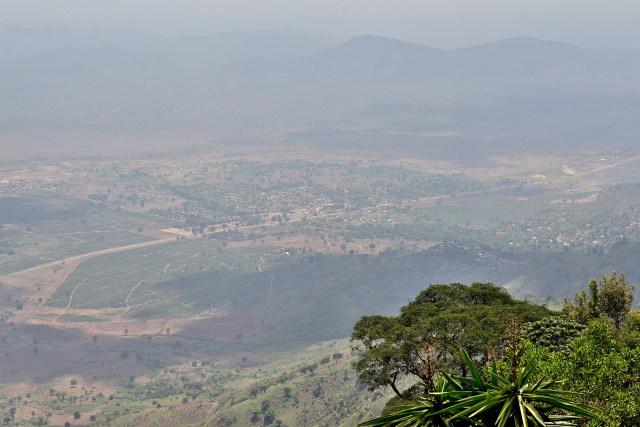
|
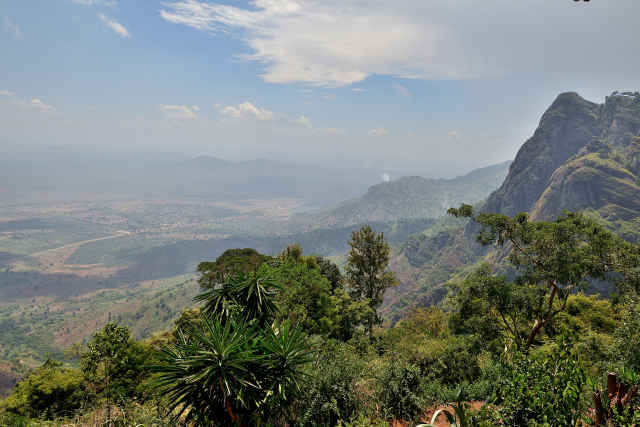
|
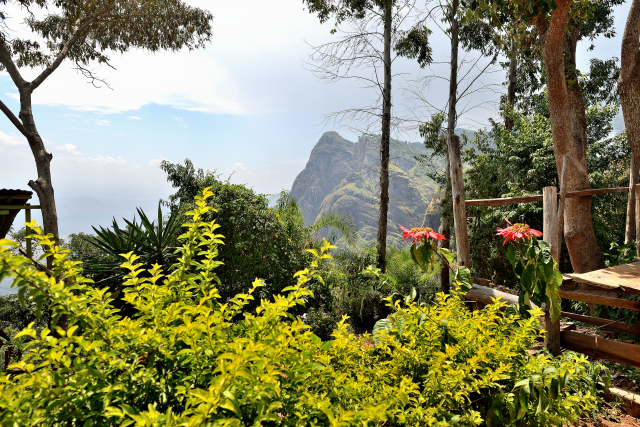
|
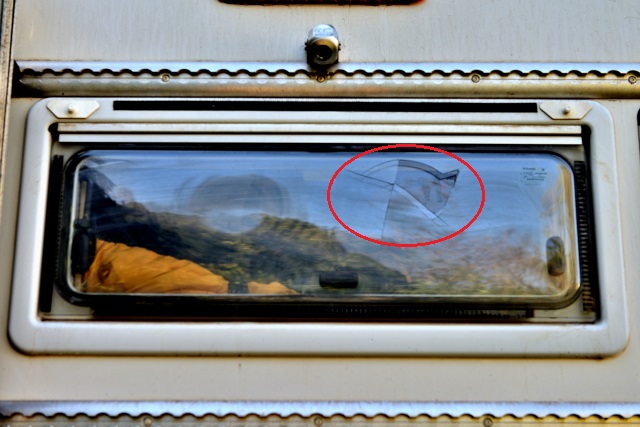
|
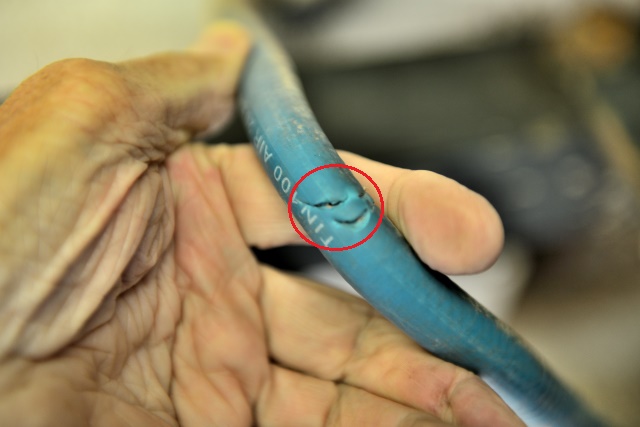
|
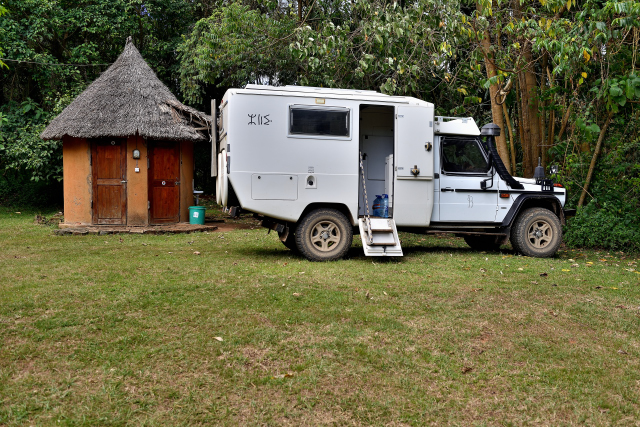
|
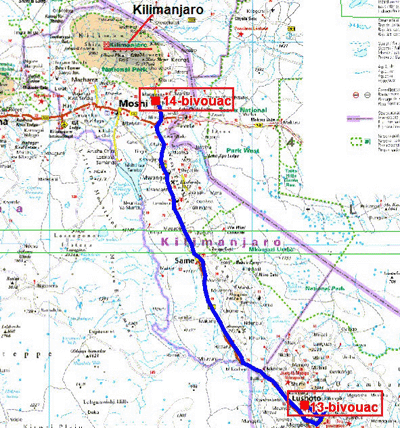
The GPS road tracklog
from Lushoto, Irente Farm to Marangu Hotel
from 2019/03/20 to 2019/03/20
Marangu Hotel
Wednesday, March 20 the 240 kilometer from Lushoto Irente Farm to
Marangu Hotel is not of any interest if it is not the succession of the
villages, as droppings of she-goat on the road, always preceded by a
panel speed limited at 50 km/h then the succession of three units of
five bitumen rolls to oblige to slow down before the first back of
donkey (hump), sometimes there is up to five. Of course before the panel
of end of limitation at 50km/h there is again three units of five
bitumen rolls. Speed on road is limited at 80 km/h; the frequency very
brought closer to the villages involves two behaviors, due to the
presence of police radars, either to lead to 80km/h or more and to slow
down brutally while by seeing the panel of 50 km/h, or to adopt a cool
control between 55 and 60 km/h to release the accelerator by seeing the
panel of 50 km/h to arrive indeed at the limited speed; at all events in
the villages it is more advisable to drive at30 km/h to nicely take the
above-mentioned obstacles on the roadway. Of course I adopted this
prudential driving. The consequence is that I traversed the 240 km in 6
hours. For memory it is very benefit for fuel consumption, the brakes,
the tires and the engine oil. “Who wants go far spares his mounting”.
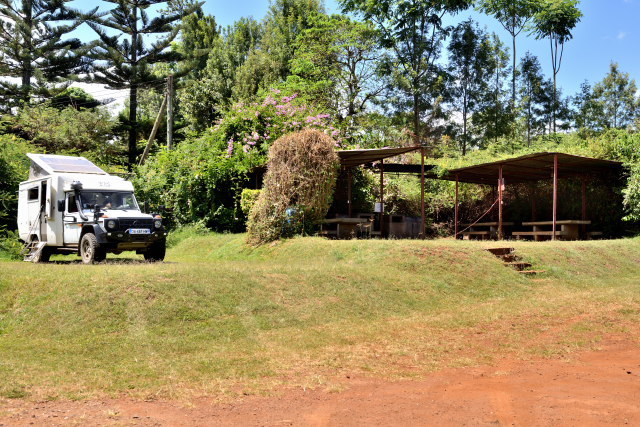
|
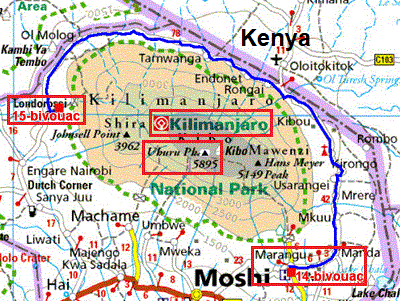
The GPS road tracklog
from Marangu Hotel to Simba Farm
from 2019/03/21 to 2019/03/21
Simba Farm
Thursday, March 21 I left Marangu to make the trip around Kilimanjaro,
here, northwards up to Londorosi to bivouac at Simba Farm. The 129
kilometers are asphalted during the first 79 kilometers then the road
becomes a track in Maasai country during approximately 40 km for finally
becoming a new tarred road. Along the road I tracked the MT Kilimanjaro
of which I had climbed in February 1998,
here. The gallery below shows Kili in all its states.
click on the pic for opening the gallery
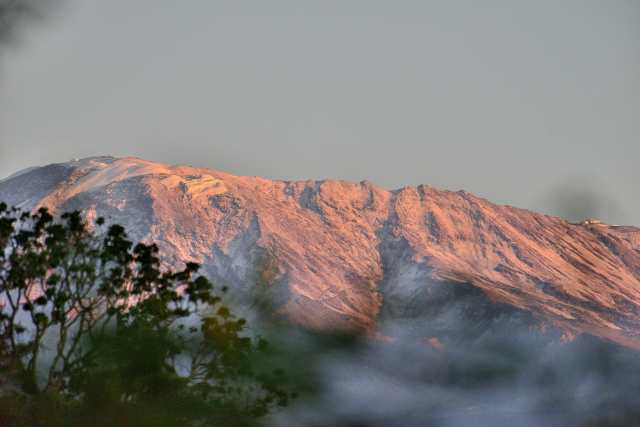
|
| Kilimanjaro at 6:30 am with low angle light |
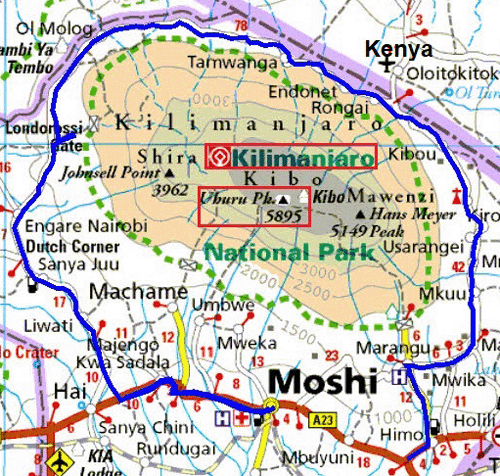
The GPS road tracklog
around Kilimanjaro




